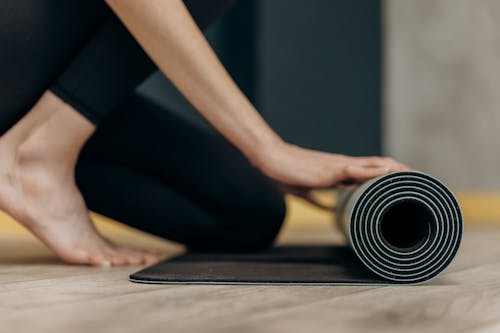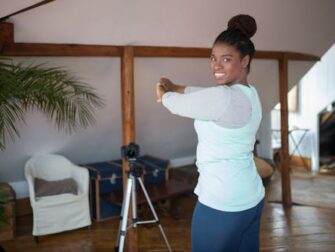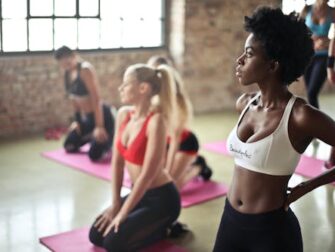Fitness for All: Exercises and Routines for Every Body
In today’s world, fitness has become a crucial aspect of a healthy lifestyle. However, the approach to fitness is not one-size-fits-all. Different bodies have different needs and capabilities. This article aims to provide a comprehensive guide to fitness exercises and routines suitable for every body, regardless of age, fitness level, or physical condition.
1. Understanding Your Body
Before diving into any fitness routine, it’s important to understand your body and its capabilities. This involves assessing your current fitness level, identifying any limitations or health concerns, and setting realistic goals. Consulting with a healthcare professional or fitness expert can provide valuable insights tailored to your specific needs.
2. Cardiovascular Exercises
Cardiovascular exercises, also known as cardio, are essential for improving heart health, increasing stamina, and burning calories. Here are some cardio exercises suitable for all body types:
a. Walking: One of the simplest yet most effective forms of cardio, walking can be easily incorporated into your daily routine. Aim for at least 30 minutes of brisk walking most days of the week.
b. Cycling: Whether outdoors or on a stationary bike, cycling is a low-impact exercise that strengthens the legs and improves cardiovascular health.
c. Swimming: Ideal for individuals with joint pain or mobility issues, swimming provides a full-body workout while being gentle on the joints.
d. Dancing: Dancing is a fun and enjoyable way to get your heart pumping. From salsa to hip-hop, there are dance styles to suit every taste and fitness level.
3. Strength Training
Strength training is crucial for building muscle mass, improving bone density, and boosting metabolism. Here are some strength training exercises suitable for beginners to advanced fitness enthusiasts:
a. Bodyweight Exercises:
- Push-ups: Targets the chest, shoulders, and triceps.
- Squats: Works the quadriceps, hamstrings, and glutes.
- Planks: Engages the core muscles and improves stability.
- Lunges: Strengthens the legs and improves balance.
b. Resistance Band Exercises:
- Banded Rows: Targets the upper back and biceps.
- Banded Squats: Adds resistance to squats for increased intensity.
- Banded Chest Press: Works the chest muscles with added resistance.
c. Free Weight Exercises:
- Dumbbell Shoulder Press: Strengthens the shoulder muscles.
- Barbell Deadlifts: Work the posterior chain, including the lower back and hamstrings.
- Kettlebell Swings: Engage the entire body, particularly the glutes and core.
Read More: Exercise Anywhere: Simple Workouts for Busy Lifestyles
4. Flexibility and Mobility
Flexibility and mobility exercises are essential for maintaining range of motion, preventing injuries, and relieving muscle tension. Here are some flexibility exercises suitable for all body types:
a. Stretching:
- Hamstring Stretch: Sit on the floor with one leg extended and reach towards your toes.
- Shoulder Stretch: Bring one arm across your body and gently press it with the other arm.
- Calf Stretch: Stand facing a wall, place one foot behind you, and lean forward to stretch the calf muscle.
b. Yoga:
- Child’s Pose: Kneel on the floor, sit back on your heels, and reach your arms forward, lowering your chest towards the ground.
- Downward Facing Dog: Start in a plank position, then lift your hips up and back, forming an inverted V shape with your body.
- Warrior Pose: Step one foot back into a lunge, with the front knee bent at a 90-degree angle, and reach your arms overhead.
5. Tailoring Your Fitness Routine
Once you’ve explored different types of exercises, it’s important to tailor your fitness routine to suit your individual needs and preferences. Here are some tips for creating a personalized fitness plan:
a. Set Realistic Goals: Whether it’s losing weight, gaining muscle, or improving flexibility, set achievable goals that motivate you to stay on track.
b. Mix It Up: Keep your workouts varied and interesting by incorporating different types of exercises, such as cardio, strength training, and flexibility exercises.
c. Listen to Your Body: Pay attention to how your body responds to exercise and adjust your routine accordingly. If something causes pain or discomfort, modify the exercise or choose an alternative.
d. Schedule Regular Rest Days: Rest and recovery are essential for allowing your muscles to repair and grow. Aim to have at least one or two rest days per week.
e. Stay Consistent: Consistency is key to seeing results from your fitness routine. Find a schedule that works for you and stick to it as much as possible.
Conclusion
Fitness is not a one-time achievement but a lifelong journey. By understanding your body, incorporating a variety of exercises, and listening to your body’s signals, you can create a fitness routine that works for you. Remember, it’s never too late to start, and every small step towards a healthier lifestyle counts. Embrace the journey, stay consistent, and enjoy the countless benefits of a fit and active life.



